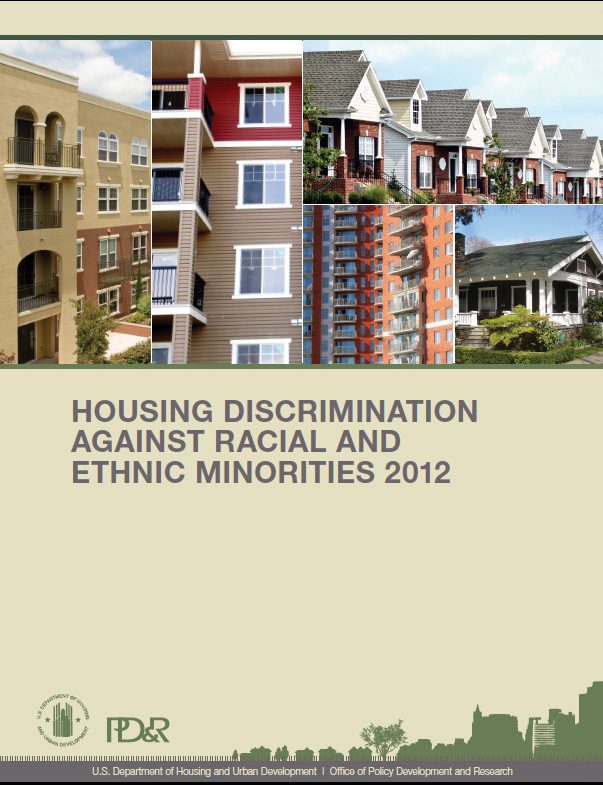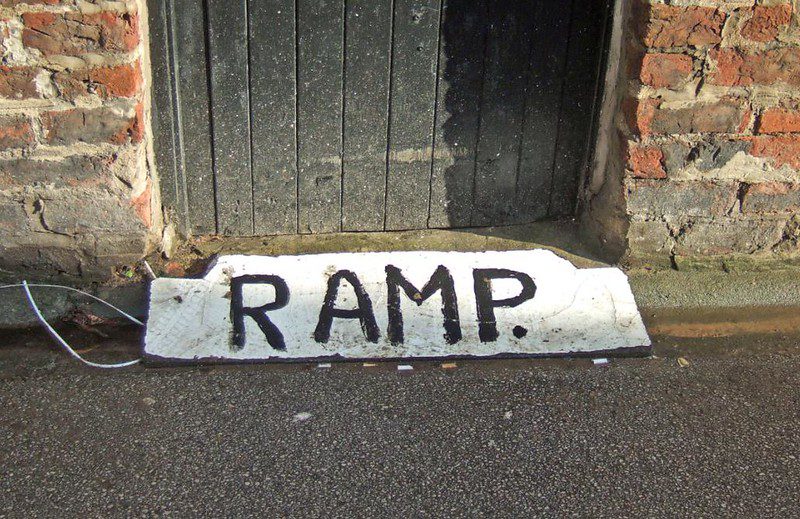A realtor should never be instrumental in introducing into a neighborhood a character of property or occupancy, members of any race or nationality or any individual whose presence will clearly be detrimental to property values in the neighborhood. (National Association of Realtors 1950)
_______
“REALTORS® shall not deny equal professional services to any person for reasons of race, color, religion, sex, handicap, familial status, national origin, or sexual orientation. (National Association of Realtors 2013)
Two provocative national fair housing studies were issued by HUD last month. A study of racial and ethnic discrimination showed real progress but also revealed the persistence of unequal treatment in the nation's housing markets. A second study of same-sex couples, the first such investigation by HUD, revealed starker discrimination against gay and lesbian renters. Together they demonstrate the benefits of previous enforcement and education efforts as well as the need to continue and expand upon those efforts, at least in the foreseeable future.
Both studies used a method known as paired testing. That is teams of equally qualified homeseekers (one white and one non-white in the first case, one heterosexual and the other gay or lesbian in the second) approached housing providers asking about the same type of housing. Since the homeseekers and the homes they were seeking were identical, the assumption is that there should have been no difference in the way testers within each team were treated. Unfortunately, that was frequently not the case.
In “Housing Discrimination Against Racial and Ethnic Minorities 2012,” the fourth national study in the past 40 years prepared by the Urban Institute for HUD, researchers found that when equally and highly qualified homeseekers approached real estate and rental agents, they were treated basically the same when it came to making appointments to visit available housing units. But African American, Hispanic, and Asian homeseekers were told about and shown fewer homes ranging from four percent to 19 percent fewer units. No doubt if the study used equally but marginally qualified testers, the disparities would have been larger.
In the previous studies, a significant number of non-white homeseekers were not shown any homes, steered to less desirable neighborhoods, charged higher rents, and offered fewer other services than were their white counterparts. These types of unfair treatment occurred far less frequently in 2012. But racial and ethnic minorities are still told about and shown fewer homes, limiting their housing choice and the benefits associated with equal housing opportunity.
These findings differ from those of previous waves of national housing discrimination studies. No doubt enforcement of the nation's fair housing laws and stepped up education programs helped.
Since the federal Fair Housing Act was passed in 1968 the National Fair Housing Alliance and its members have secured more than $380 million for plaintiffs in fair housing lawsuits and administrative complaints. Real estate agents have been educated about the requirements of the law and codes of ethics in the industry have changed. In its 2000 report, “How Much Do We Know? Public Awareness of the Nation's Fair Housing Laws,” the Urban Institute found that those who are familiar with the requirements of the Fair Housing Act are more supportive of stronger enforcement.
The progress has been real. At the same time, it should be noted that discrimination persists in those later stages of the housing search where bias is more subtle and less detectable by current testing practices.
Interestingly, in “An Estimate of Housing Discrimination Against Same-Sex Couples“ prepared for HUD by M. Davis and Company Inc. gay and lesbian couples encountered barriers in their efforts to secure rental housing earlier in the process than was the case for racial and ethnic minorities. (In the interest of full disclosure, Friedman was the lead author of the same sex study and Squires was one of the consultants on both studies.) With no federal fair housing protections in place for these homeseekers, housing providers need not be as careful in their dealings with them.
In over 11 percent of the tests, conducted by email, same-sex couples did not even get a response to their initial inquiry when the opposite-sex homeseekers did. (In approximately 3 percent of the cases the same-sex homeseekers did get a response when the heterosexual couple did not.) It is likely that this study understated the actual level of discrimination against gay and lesbian homeseekers because the landlord may not have clearly ascertained the sexual orientation of the couples inquiring about the housing. In-person audits would provide landlords with visual cues, likely leading to more frequent instances of discrimination. Because this was the first national investigation of same-sex discrimination, no conclusions can be drawn about progress that may have been achieved in recent years.
The Fair Housing Act prohibits housing discrimination on the basis of race, color, national origin, religion, sex, familial status or handicap. Gender identity and sexual orientation are not protected classes, but they should be. The Housing Opportunities Made Equal (Home) Act introduced in June by Sherrod Brown in the Senate and Jerrold Nadler and John Conyers in the House would add these two groups (along with marital status and source of income) as protected classes under the Act. Such protection is provided by some city and state fair housing laws. But most areas of the country do not provide this protection.
The Fair Housing Act has proven to be an effective remedy for many who have been denied the fundamental right to housing. But racial and ethnic minorities still need the protection that aggressive enforcement and more comprehensive education can provide, as do gay and lesbian homeseekers who, though not covered by the law, experience discrimination in the nation's housing markets. It is time to expand that protection.






Comments